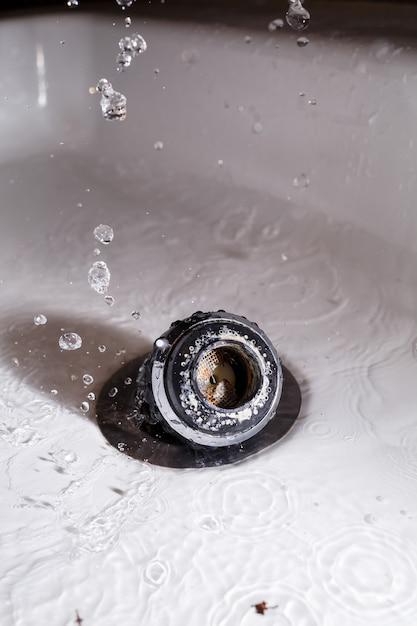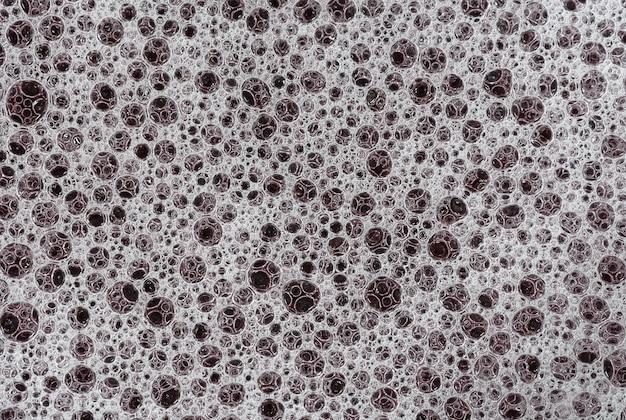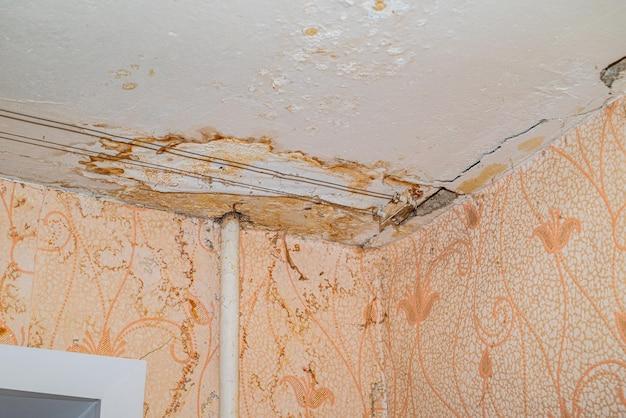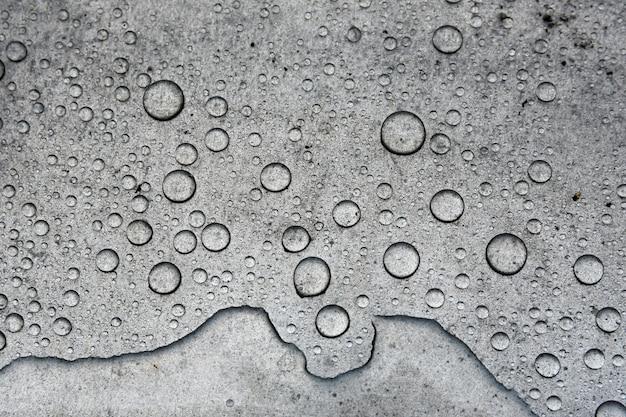Have you ever looked up at your ceiling and noticed a mysterious bubble forming? Don’t panic just yet! While it’s true that a ceiling leak bubble can be a sign of water damage, not all bubbles are created equal. Some bubbles are innocuous, while others could be an indication of serious trouble.
In this blog post, we’ll delve into everything you need to know about ceiling leak bubbles. We’ll explore the possible causes of these bubbles, whether you should pop them, and what to do if you find yourself faced with one. We’ll also discuss the differences between water bubble types and answer some common questions, such as whether a leak can cause a ceiling to collapse.
If you’re dealing with a ceiling leak bubble or just want to know more about this strange phenomenon, then keep reading! Our comprehensive guide is sure to give you the answers you’ve been looking for. Don’t let a tiny bubble cause you undue stress – read on to find out all you need to know.
Signs You Have A Ceiling Leak Bubble
If you’re noticing a bubble or bulge in your ceiling, it’s a clear sign that water has accumulated in the ceiling cavity. It’s essential to address the issue immediately to avoid further damage and potential safety issues. In this section, we’ll explore the signs to look for to identify whether you have a ceiling leak bubble.
Water Drips and Stains
One of the simplest signs of a ceiling leak bubble is water dripping or stains on the ceiling. Water stains are typically brown or yellow and may indicate water trapped behind the ceiling surface, leading to bubbling, sagging, or even falling.
Sagging or Drooping Ceiling
An obvious sign of a ceiling leak bubble is a sagging or drooping ceiling. If you observe such signs, you’ll need to act quickly as the extent of the damage can be extensive.
Mold or Mildew Growth
If you notice mold or mildew growth on your ceiling, it can be a sign of condensation or long-term water damage within the ceiling. Once the area is exposed to excess moisture and warmth, it becomes a breeding ground for mold and mildew. It’s essential to address the issue promptly to avoid severe health issues.
Bubbling or Bulging Ceiling
If you see a bubble or bulge in your ceiling, it’s a clear indication that water has accumulated inside. If left unaddressed, the bubble will eventually burst, pouring water into your living space.
Strange Odors
A strong, musty odor often accompanies a ceiling leak bubble. These odors are a clear sign that mold and mildew are present in the ceiling cavity. Such odors should never be ignored as they can lead to severe health issues.
In Conclusion
A ceiling leak bubble can be alarming. If you’ve noticed any signs mentioned above in your home, it’s essential to contact a professional immediately. Addressing these issues early will help in preventing further damage and maintaining a healthy living environment.
Why Is My Ceiling Leaking
Have you ever woken up in the middle of the night to the sound of dripping water, only to find out that your ceiling has sprung a leak? This can be a frustrating and overwhelming experience, especially if you have never encountered this issue before. In this section, we will discuss some of the most common causes of ceiling leaks and what you can do to prevent them.
Age and Wear and Tear of the Roofing Materials
One of the most common reasons for a ceiling leak is the age and wear and tear of the roofing materials. If your roof is old or damaged, it can cause leaks to occur. Over time, roofing materials may become brittle and crack, allowing water to seep through. Additionally, storm damage or other types of impact can cause damage to your roof, which can lead to leaks. If your roof is over 20 years old or if you notice signs of wear and tear, such as missing shingles or cracked tiles, it may be time to replace your roof.
Damaged or Clogged Gutters
Another common cause of ceiling leaks is damaged or clogged gutters. Gutters are designed to keep water away from your home, but if they become clogged or damaged, water can overflow and seep into your walls and ceilings. To prevent this from happening, make sure to clean your gutters regularly and repair any damage as soon as possible.
Plumbing Issues
If your ceiling leak is not coming from your roof, it may be caused by plumbing issues. Leaky pipes or a dripping faucet can cause water to accumulate in your ceiling and eventually lead to a leak. If you suspect that your ceiling leak is caused by plumbing issues, it’s best to call a professional plumber to inspect and repair the problem.
Ceiling leaks can be a frustrating and expensive problem to deal with. However, with proper maintenance and timely repairs, you can prevent them from happening. Remember to keep an eye out for signs of wear and tear on your roof, clean your gutters regularly, and call a professional plumber if you suspect plumbing issues are causing your leak. By taking these simple steps, you can keep your ceiling dry and your home protected.
Bubbles in Ceiling Plaster
Ceiling leaks can be a big headache. If you’re lucky, the water will simply drip down and you can catch it with a bucket. But if you’re not so lucky, the water can seep into the ceiling plaster, creating an unsightly bubble. These bubbles can appear on your ceiling, and they’re not only an eyesore but can lead to structural damages if left untreated.
What Causes Bubbles in Ceiling Plaster
Bubbles in ceiling plaster occur when water has seeped through a crack in the ceiling and lodged itself between the plaster and drywall. The water then causes the plaster to separate from the surface, creating a bubble-like appearance. These bubbles can grow over time and weaken the structure of your ceiling.
How to Fix Bubbles in Ceiling Plaster
Fixing bubbles in ceiling plaster is not an easy task. If you’ve never done it before, you may want to consider hiring a professional to get the job done right. Here are the general steps you need to follow:
- Identify the source of the leak, and fix it.
- Use a putty knife to remove the bubble by cutting around it.
- Clean the area thoroughly and let it dry completely.
- Apply a new layer of plaster or joint compound over the affected area.
- Sand down the surface and repaint the ceiling to match the surrounding area.
Tips to Prevent Bubbles in Ceiling Plaster
Prevention is always better than cure. So, here are some tips to help you prevent bubbles from forming in your ceiling plaster:
- Check your roof regularly and fix any leaks immediately.
- Keep your gutters clean to prevent water damage.
- Inspect your ceiling for signs of damage, such as cracks or bubbles.
- Repair any water damage immediately.
Ceiling plaster bubbles can be a headache, but they’re not impossible to fix. Knowing how to prevent them from forming in the first place is important. Remember to address any leaks or damage immediately to avoid costly repairs down the road. By following these tips, you can keep your ceiling looking as good as new while avoiding any structural damages.
What Causes Ceiling Bubble
Ceiling bubbles can be frustrating, unsightly, and potentially dangerous for homeowners. But what exactly causes them?
Moisture Buildup
One common cause of ceiling bubbles is moisture buildup. This can happen when water from a leak or condensation gets trapped between your ceiling and the floors above. Over time, the moisture can lead to mold growth and weaken the structural integrity of your ceiling, causing it to bubble or sag.
Roofing Issues
If your ceiling bubble is located near the edge of your roof, roofing issues may be the culprit. Damage to your roof, missing or damaged shingles, or clogged gutters can allow water to seep into your walls, causing bubbles to form on your ceiling.
Plumbing Problems
Ceiling bubbles can also be caused by plumbing problems, such as leaky pipes or overflowing toilets. If you notice water stains or bubbles in your ceiling near your bathroom or kitchen, it’s important to investigate to prevent further damage.
Poor Ventilation
Poor ventilation can also contribute to moisture buildup and ultimately lead to ceiling bubbles. Inadequate ventilation in bathrooms, kitchens, and other areas of your home can create a damp environment, making it easier for mold and mildew to grow.
When it comes to dealing with ceiling bubbles, identifying the cause is half the battle. By pinpointing the cause of the problem, you can take steps to address it and prevent further damage to your home. If you’re unsure what’s causing your ceiling bubble, it’s always best to consult with a professional to determine the root cause and find a proper solution.
How to Fix a Bubble in Your Ceiling
If you’ve noticed a bubble in your ceiling, it’s essential to fix it as soon as possible. A bubble in your ceiling can indicate a water leak, which, if left unchecked, can cause significant damage to your home. Here’s a step-by-step guide on how to fix a bubble in your ceiling.
Step 1: Identify the Source of the Problem
Before fixing a bubble in your ceiling, you need to identify the source of the problem. Check if there’s any water leaking from the ceiling; if there is, turn off the water supply to prevent further damage. If you’re not sure where the water is coming from, it’s best to call a professional to assess the situation.
Step 2: Drain the Water and Remove the Bubble
Use a knife to create a small hole in the center of the bubble and let the water drain out into a bucket. Be careful not to poke too deep and hit any wires or pipes in the ceiling. Once the water has drained, use a putty knife to remove the bubble.
Step 3: Dry the Ceiling
Use a fan or a dehumidifier to dry the ceiling and ensure that there are no damp spots left. You can also use a hairdryer to dry the area, but be careful not to overheat the ceiling or cause any damage.
Step 4: Patch the Hole
Use a patching compound to patch the hole you cut in the ceiling. Follow the instructions on the packaging for the best results. Once you’ve applied the compound, let it dry completely.
Step 5: Sand and Paint
Once the patching compound is dry, sand the area lightly to make it smooth, then paint over it to match the rest of the ceiling. You may need to apply multiple coats of paint to get the color right.
Fixing a bubble in your ceiling can be a bit tricky, but with this step-by-step guide, you should be able to handle it. Remember, if you’re not comfortable doing this yourself, it’s always best to call a professional to do it for you. Make sure you address the problem as soon as possible to avoid further damage to your home.
Bubble on Ceiling but No Water
If you’ve noticed a bubble on your ceiling, but there’s no water coming out of it, don’t panic. While it could be a sign of a leak, it may also be caused by other factors. Here are some of the most common reasons why you might see a bubble on your ceiling without any water:
Condensation
If the bubble is small and appears only occasionally, it may be caused by condensation. This happens when warm, moist air meets a cold surface, such as the ceiling. The moisture in the air condenses on the surface, creating a small bubble that will usually disappear on its own.
Humidity
If the bubble is a bit larger and appears to be growing, it may be caused by high humidity levels in your home. High humidity levels can cause the paint or plaster on the ceiling to absorb moisture from the air, creating a bubble.
Poor Ventilation
Poor ventilation can also cause bubbles on your ceiling. When moisture is trapped in a confined space, such as a room with poor ventilation, it can accumulate on the ceiling and create a bubble.
Structural Issues
If the bubbles are large and located in multiple areas of the ceiling, it may be due to a structural issue. This could be caused by a problem with the roof, such as a leaking roof or a damaged flashing.
In conclusion, a bubble on your ceiling without any water may be caused by various factors. If you’re unsure about the cause of the bubble, it’s always best to contact a professional. A qualified contractor can help you diagnose the issue and offer the best solution to fix it. In the meantime, keep an eye on the bubble and monitor it for any changes in size or appearance.
Small Water Bubbles on Ceiling
If you’ve noticed small water bubbles on your ceiling, it’s important to take action ASAP. Small water bubbles are a sign of a ceiling leak, and if left untreated, they can quickly lead to larger, more serious issues.
What Causes Small Water Bubbles on Ceiling
Small water bubbles on the ceiling are typically caused by a leak in the roof or plumbing system. The most common cause of a ceiling leak is a damaged or missing shingle on your roof, but leaks can also be caused by damaged flashing or a cracked pipe.
How to Check for Small Water Bubbles on Ceiling
The easiest way to check for small water bubbles on the ceiling is to look for water stains or discoloration. These stains will often be brown or yellow in color and may feel damp to the touch. If you notice any discoloration on your ceiling, it’s important to investigate further to determine if there is a leak.
How to Fix Small Water Bubbles on Ceiling
Fixing small water bubbles on the ceiling will depend on the cause of the leak. If the leak is caused by a damaged shingle, you may need to replace the shingle or repair the flashing. If the leak is caused by a cracked pipe, you may need to call a plumber to fix the issue.
Prevention is Key
Preventing small water bubbles on the ceiling is easier than fixing them. Regular maintenance of your roof and plumbing system can go a long way in preventing leaks. Additionally, keeping an eye out for signs of a potential leak, such as water stains or discoloration on your ceiling, can help you catch issues early and prevent further damage.
In conclusion, small water bubbles on the ceiling are a sign of a leak and should be addressed promptly to prevent further damage. If you notice any discoloration on your ceiling, it’s important to investigate further to determine the cause of the issue and take action as needed.
What Causes Water Bubble in Ceiling
If you’ve ever noticed a bubble on your ceiling, you already know how frustrating and unsightly they can be. However, what causes water bubbles in the ceiling, and how can you prevent them from occurring in the first place?
Leakages
One of the most common reasons for water bubbles in the ceiling is a leak. A leak could occur due to a broken pipe or roof, which causes water to seep through the ceiling and leave behind bubbles. If the bubble is left unattended, it can lead to further damage to the ceiling and walls, leading to costly repairs.
Humidity
Another common cause of water bubbles in the ceiling is humidity. Humidity can cause water to condense on the ceiling, resulting in bubbles. This is especially the case in areas with high levels of humidity, such as bathrooms and kitchens. A dehumidifier is one solution to combat this issue.
Poor Ventilation
Lack of sufficient ventilation can also be a cause of water bubbles in the ceiling. Poor ventilation causes moisture to build up and stay stagnant in the ceiling leading to the formation of bubbles. Adequate ventilation is necessary for preventing water bubbles in areas with high moisture like kitchens, bathrooms, and laundry rooms.
Excess Water on Ceiling
Water accumulating on your ceiling after a storm or spilled water can also cause water bubbles in the ceiling. In such cases, it is vital to dry the area as soon as possible to prevent water accumulation, which could lead to bubbles.
In summary, causes of water bubbles in the ceiling include leakages, humidity, excess water, and poor ventilation. Regular checkups to detect any leakages and good practices like proper ventilation can help prevent this issue. In case of any water bubble formation, contact a professional to fix the problem before it leads to costly repairs.
Should I Pop a Water Bubble in Ceiling
Ceiling leak bubbles can be quite a sight and may make homeowners wonder what actions they need to take. One common question that many homeowners ask is, “Should I pop a water bubble in ceiling?” In this section, we’ll provide some insights into this topic to help you make an informed decision.
Understanding Water Bubbles in Ceiling
Water bubbles in the ceiling are typically a sign of water damage or leakage. If left untreated, water bubbles can cause further damage to your home, and you will eventually need to invest in more extensive repairs. Water bubbles can also indicate the presence of mold, which can cause a slew of health problems in both humans and pets.
The Dangers of Popping Water Bubbles in Ceiling
Popping water bubbles in the ceiling is not always a wise decision, and doing so can cause several hazardous outcomes. When you burst a water bubble, you risk causing the water to leak from the ceiling, leading to water damage and potentially further deterioration of your property.
Secondly, it’s worth noting that water trapped in the ceiling can also be contaminated, and bursting the bubble can cause it to spread around your home. This could cause health issues, and it’s not something you want to be dealing with.
What to Do About Water Bubbles in Ceiling
If you discover a water bubble in your ceiling, it’s best to contact a professional water damage specialist to address the issue. They will provide specialized expertise to identify the cause of the damage and determine the best course of action to fix it.
In summary, we strongly advise against popping water bubbles in the ceiling as it can be dangerous and worsen the situation. Instead, hire a professional to handle this task and ensure that the job is done correctly.
Can a leak cause a ceiling to collapse
As a homeowner, finding a leak in your ceiling can be a cause for serious concern. In addition to the water damage and unsightly discoloration that the leak can cause, many people worry that the ceiling could collapse. So, can a leak really cause a ceiling to collapse?
Understanding Ceiling Construction
Before we can answer that question, it’s important to understand a bit about how ceilings are constructed. Most modern homes have ceilings made of drywall, which is a type of gypsum board. This material is strong and relatively lightweight, and is ideal for use in ceilings.
However, there is a limit to how much weight a drywall ceiling can support. If there is too much weight pressing down on the ceiling, it could collapse. This weight could come from many sources, from people walking on the floor above to heavy objects stored in the attic.
How Leaks Can Cause Damage
A leak in your ceiling can cause a lot of damage. As the water seeps through the drywall, it can weaken the material and cause it to sag or deform. Over time, the weakened area could become so damaged that it can no longer support the weight of the ceiling, leading to a potential collapse.
How to Prevent Ceiling Collapse
The good news is that there are steps you can take to prevent a ceiling collapse caused by a leak. The first step is to repair the leak as soon as possible. This will prevent further water damage and reduce the risk of collapse.
Next, you should inspect the damaged area and determine if any structural damage has occurred. If there is any doubt, it’s a good idea to consult a structural engineer or contractor to assess the damage.
Finally, you should take steps to reinforce the damaged area. This could involve installing additional support beams or using a different type of material to reinforce the weak area.
While a leak in your ceiling can be a serious problem, it’s unlikely to cause a collapse on its own. However, if the leak is left unrepaired for too long, it could weaken the structure of the ceiling and increase the risk of collapse. As always, it’s best to be proactive and take steps to repair the damage as soon as possible.
What to do if you discover a water bubble in your ceiling
Ceiling leaks can be a real headache for homeowners, and discovering a water bubble on the ceiling can be a cause for concern. However, there are some steps you can take to minimize the damage and prevent the problem from getting worse. In this section, we’ll cover what you should do if you find a water bubble in your ceiling.
1. Identify the source of the leak
The first step in dealing with a water bubble in your ceiling is to determine where the water is coming from. Water leaks can be caused by a variety of issues, including damaged roofing, burst pipes, or faulty appliances. Identifying the source of the leak will help you to address the root cause of the problem.
2. Drain the water
Once you have identified the source of the leak, you will need to drain the water from the ceiling. You can do this by puncturing the bubble with a sharp object like a needle or a pin to create a small hole. Place a bucket underneath the hole to catch the water and prevent it from damaging your floors or furniture.
3. Dry the area
After draining the water, you will need to dry the affected area thoroughly. Use a fan or a dehumidifier to circulate air and remove any moisture from the ceiling and the surrounding area. You can also use a towel to soak up any excess water if necessary.
4. Repair the leak
Once you have drained the water and dried the area, you will need to repair the source of the leak. Depending on the cause of the problem, you may need to hire a professional to fix the issue. If you are unsure about the source of the leak, it’s always best to seek the help of a licensed professional to avoid further damage.
5. Address any damage
Finally, you will need to address any damage caused by the water leak. This may involve replacing damaged drywall or floorboards, repainting the ceiling, or repairing any electrical components that may have been affected.
In conclusion, discovering a water bubble in your ceiling can be a stressful experience, but by following these steps, you can mitigate the damage and prevent the problem from getting worse. Remember to identify the source of the leak, drain the water, dry the area, repair the leak, and address any damage caused by the water leak. By doing so, you can restore your home to its former condition and ensure your family’s safety.



